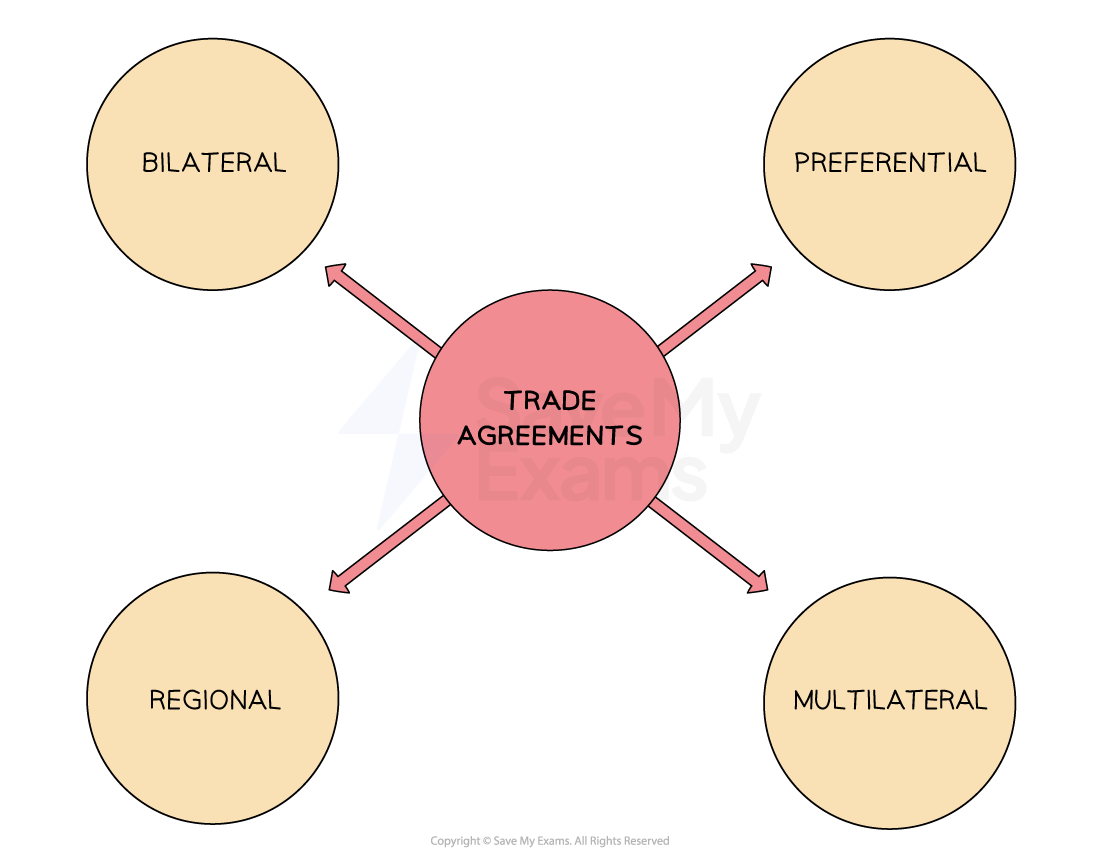Economic Integration
- Economic integration occurs as countries reduce trading barriers between themselves and become more interdependent
- There are several ways in which economic integration can deepen
- Through the development of trade agreements
- Through the creation of trading blocs
- Through the formation of a monetary union
1. Trade agreements

There are 4 common types of trade agreements
- A preferential trade agreement (PTA) is an agreement between two or more countries providing preferential (better)
terms and conditions of trade to member countries- E.g. Vietnam has preferential tariff rates with Australia
- E.g. Vietnam has preferential tariff rates with Australia
- A bilateral trade agreement is a preferential trade agreement between two countries and aims to reduce or eliminate barriers to trade
- E.g. Vietnam signed a bilateral trade agreement with Korea in 2015
- E.g. Vietnam signed a bilateral trade agreement with Korea in 2015
- A regional trade agreement (RTA) is a preferential trade agreement usually between more than two countries in the same geographical region
- E.g. Armenia created an agreement with the EU in 2019 to create the EU-Armenia RTA
- E.g. Armenia created an agreement with the EU in 2019 to create the EU-Armenia RTA
- A multilateral trade agreement is a legally binding preferential trade agreement between more than two countries or trading blocs and is usually negotiated and overseen by the World Trade Organisation (WTO)
- E.g. The East African Community was created in 2005 between seven African countries
2. Trading Blocs
- There are generally three types of trading blocs - Free Trade Areas (FTAs), Customs Unions, and Common Markets
- Each successive bloc has a higher level of integration
3. Monetary Unions
- Monetary Unions often develop once there is integration at a Common Market level
- Nations in the Common Market may desire the creation of a common central bank and convergence of monetary policy